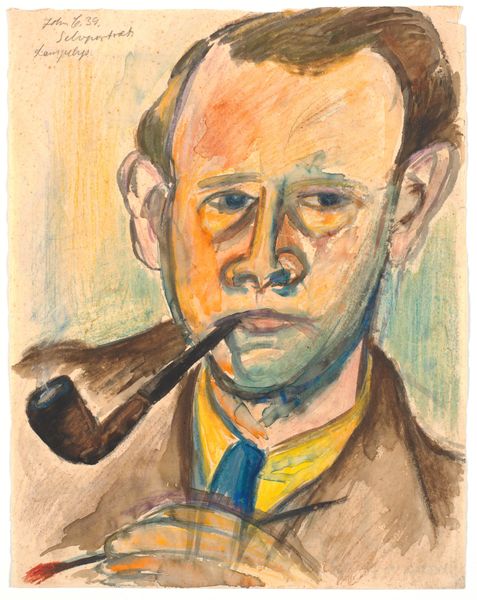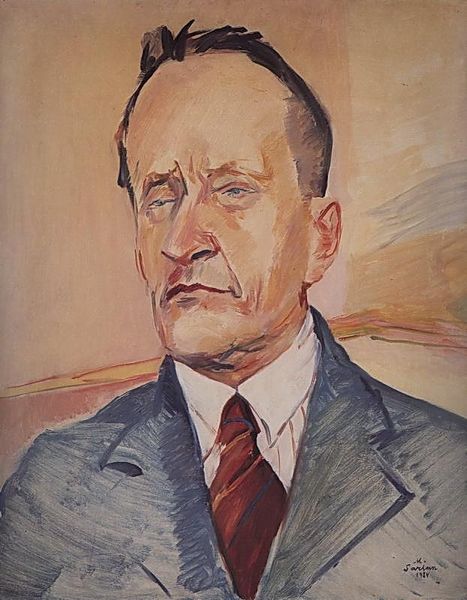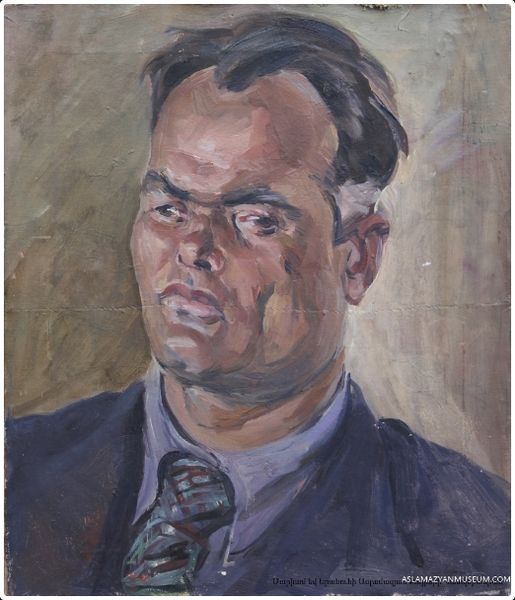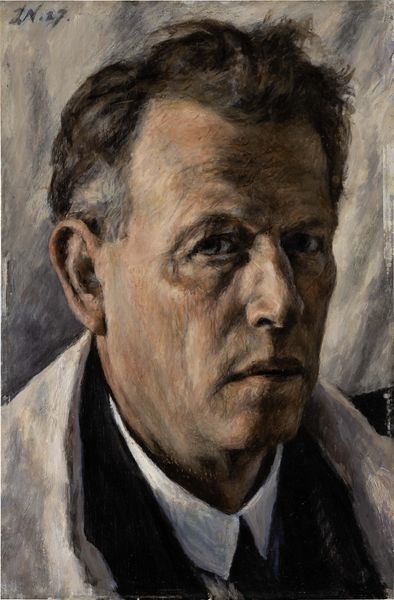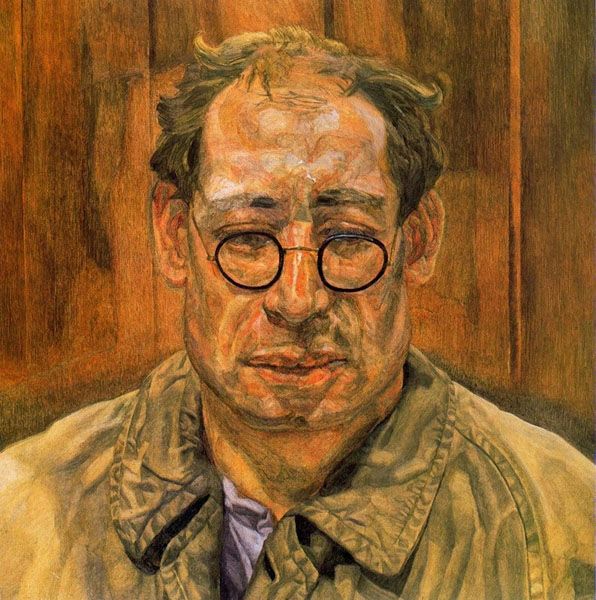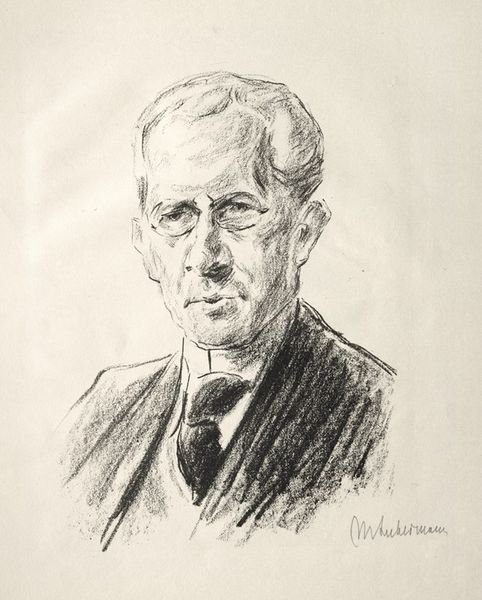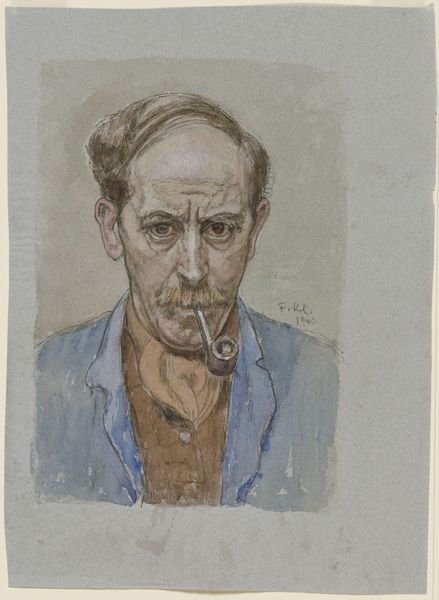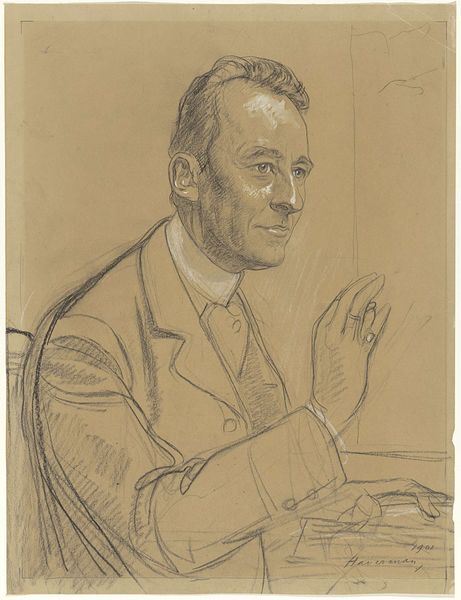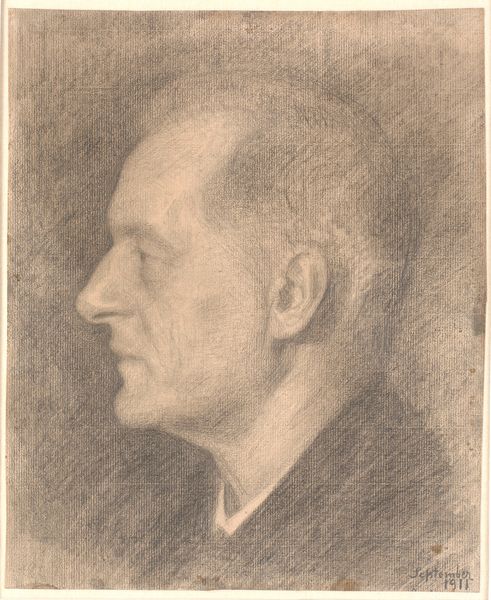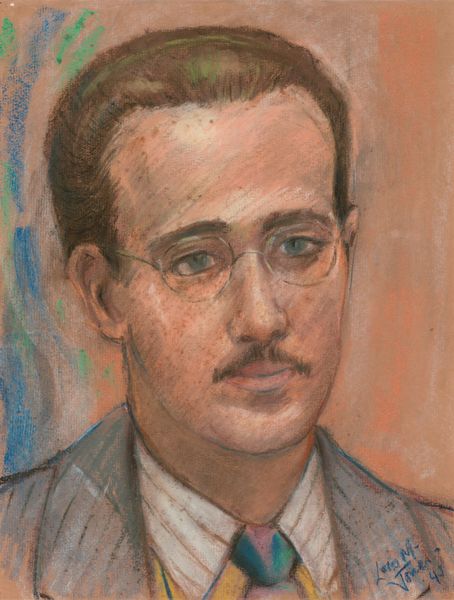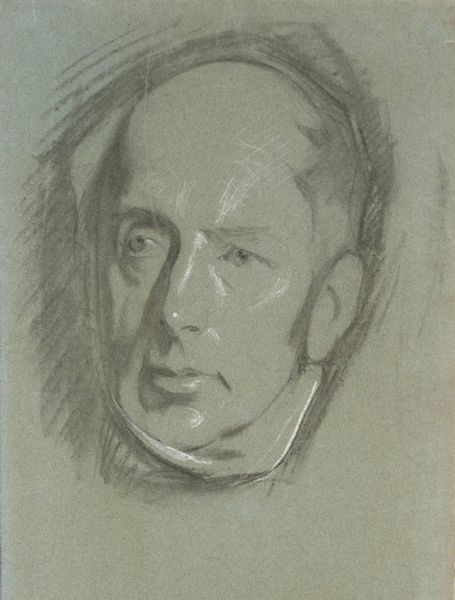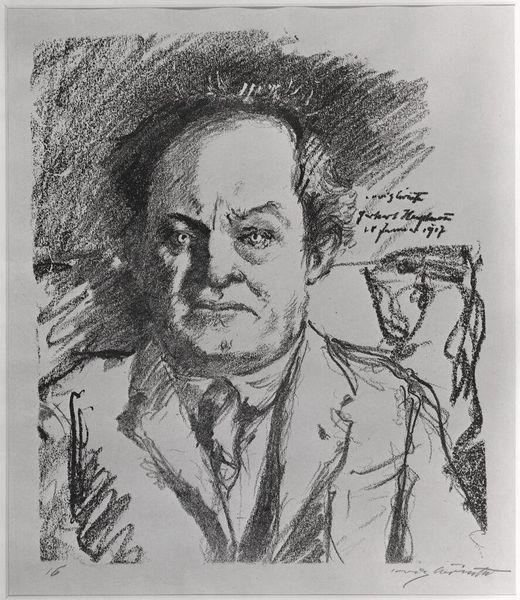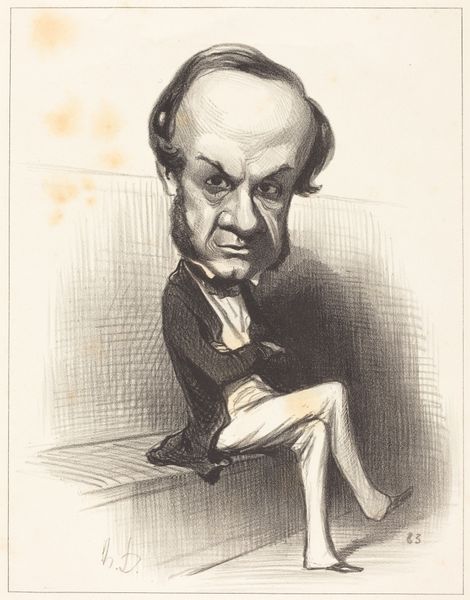
drawing, pencil
#
portrait
#
drawing
#
famous-people
#
pencil
#
realism
Copyright: David Burliuk,Fair Use
Curator: I’m immediately drawn to the textural quality of this portrait. It’s predominantly soft and a bit melancholy, really making me feel the subject's weight, you know? Editor: Agreed. Let's set the stage. We are looking at David Burliuk’s 1932 “Portrait of Sergei Eisenstein.” Burliuk was deeply invested in exploring the materiality of art, evident in his choice of pencil to depict the renowned Soviet filmmaker during a period of intense political and artistic scrutiny. Curator: The visible pencil strokes across the page—the hatch marks and layering—reveal so much about the artist's hand and process, giving it an accessible quality despite its famous subject. How interesting that he'd use these more humble means to represent such a high-profile individual! Editor: Absolutely, and that very tension, between the accessible medium and the towering figure of Eisenstein, opens up crucial questions. This portrait wasn't created in a vacuum; the USSR was undergoing immense change. I think examining Burliuk's materials alongside the political landscape provides context for the art and how people might have seen it then. Curator: Interesting... For me, the beauty resides in those tactile qualities, like how Burliuk suggests light on the face simply by varying the pressure of the pencil. It's such a manual, process-oriented way of creating depth and shadow. He renders a three-dimensional image on a two-dimensional surface via what you could call 'labor.' Editor: Thinking about the labor, too, leads me to question: Who was this portrait for, and how might it have functioned politically? Eisenstein faced censure at different moments for alleged formalism and 'insufficient' adherence to socialist realism. Could Burliuk's 'realistic' portrayal be a gesture of solidarity, and perhaps defiance through technique itself? It's all very relevant and layered. Curator: Indeed. Ultimately, the dialogue between art, craft, and labor really resonate here, it highlights those intrinsic qualities we may normally ignore when just experiencing the portrait at a glance. Editor: Yes, looking at this work, particularly its medium and when and by whom it was crafted, makes you wonder how its social and cultural implications still play out today. It’s a conversation starter!
Comments
No comments
Be the first to comment and join the conversation on the ultimate creative platform.

